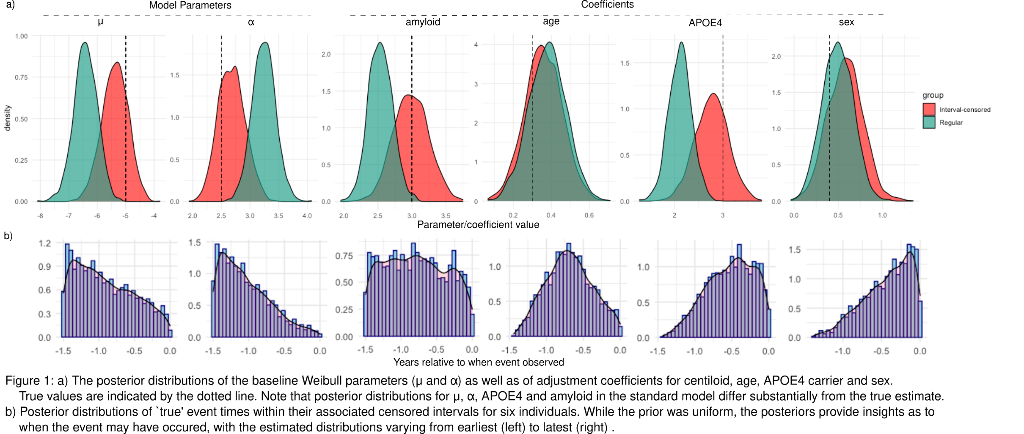ACCOUNTING FOR INTERVAL-CENSORING IN LONGITUDINAL ALZHEIMER'S DATASETS IMPROVES SURVIVAL MODELLING ESTIMATES
- Victor Fedyashov, Australia
Abstract
Aims
Many longitudinal Alzheimer's disease (AD) studies collect measurements every 12 or 18 months, creating uncertainty as to when discrete events (change in clinical diagnosis, conversion from amyloid negative to positive) occur. However, most time-to-event analyses assume the time an event occurs is known. We examine whether accounting for uncertainty associated with infrequent observations impacts common survival estimates.
Methods
We contrast two Weibull survival models in a Bayesian framework, denoted ‘standard’ and ‘interval-censored’, which assume the event occurs 1) exactly at the most recent visit and 2) anytime between the most and second-most recent visits. Both models, implemented in Stan, are parametrized by shape (μ), scale (α) and model coefficients (β)
We simulate conversion from amyloid negative to positive for 500 individuals, with measures of PET Amyloid, APOE4, sex and age. The distributions for events and measures are based on those observed in the Australian Imaging, Biomarkers and Lifestyle (AIBL) study for people with at least two complete data points. 14% of individuals converted during the observation period.
Results
On simulated data, the interval-censored model more accurately estimates baseline survival distribution and adjustment coefficients than the standard approach (Figure 1a). Furthermore, the Bayesian interval-censored model allows us to examine the posterior distributions of `true' event times to gain individual-level estimates as to when the event may have occurred in the censored interval (Figure 1b).

Conclusions
Accounting for interval censoring can strongly impact key survival estimates and may alter model interpretations. We are extending this to other (semi-)parametric models (e.g. Cox regression) and exploring its impact on real-world data.
